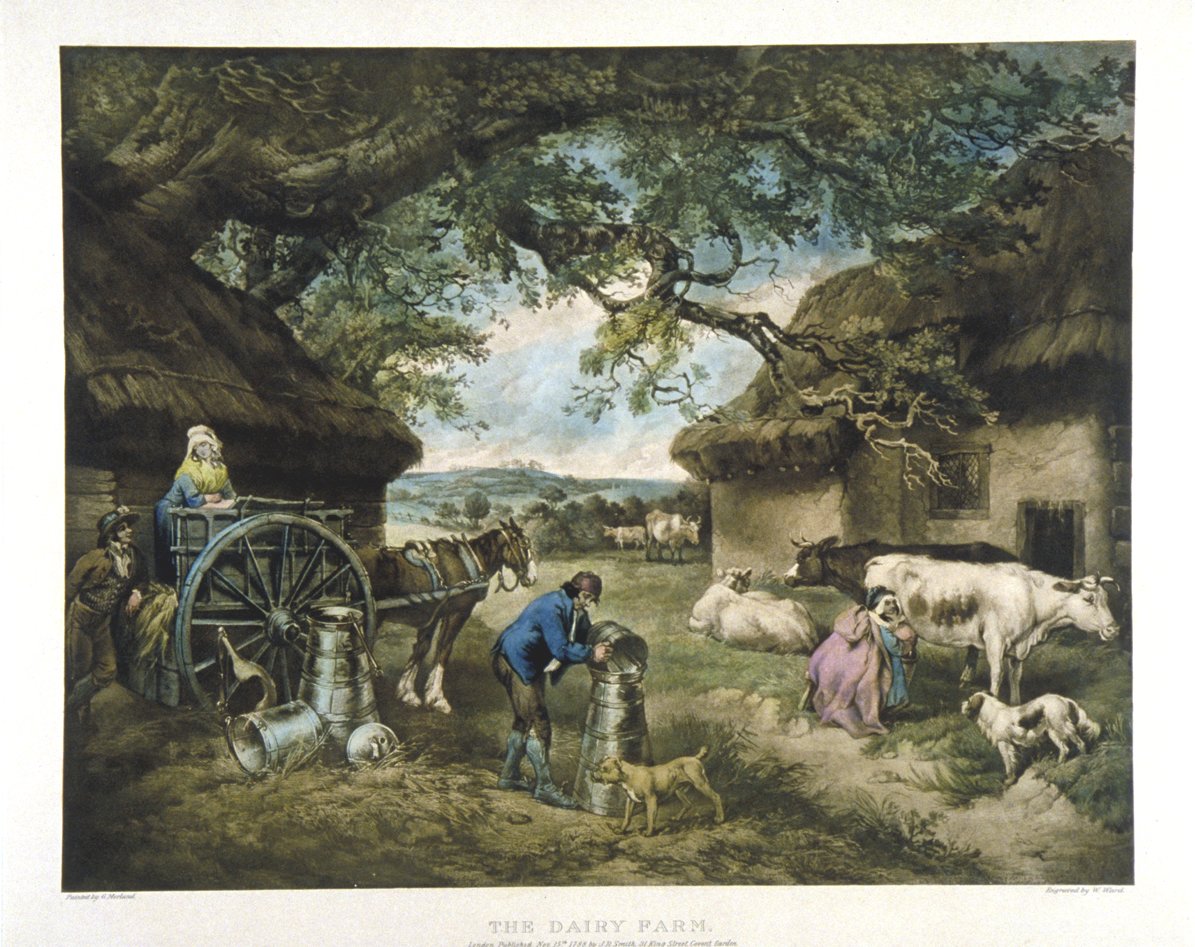The Dairy Farm
George Morland (1763 - 1804)
William Ward (1766 - 1826)
Coloured mezzotint
published 15 November 1788
-
About the work
- Location
-
Country: UK
City: London
Place: Government Art Collection
After a second plate after ‘The Dairy Farm’, engraved by P. W. Reynolds, was published in 1801, a reviewer for ‘The Monthly Magazine’ described the image as follows:
‘[The Dairy Farm] is a view of a country farmyard, and forms a pleasant rural scene. The fore-ground is broken with a good effect; the distance is well contrived; the dogs, horse, and cows, are correctly drawn, though we think that which the woman is milking, is too lank in head as well as body for our English breed. The men and women are easy and natural in their air, but the females are rather more elegant than belongs to their situation.’
This rural scene was engraved by printmaker William Ward, after an original work by George Morland. In 1786 Morland was lodging with Ward in Kensal Green, London. In September that year he married Ward’s sister, Anne, while Ward married Morland’s sister, Maria, the following month. The two couples lived together on the High Street in Marylebone for a few months, before Morland and his wife moved to Great Portland Street. Morland continued to relocate regularly in an attempt to escape his creditors. However, the productive partnership between Morland and Ward continued for most of the artist’s career.
-
About the artist
George Morland was born in London, the son of painter, engraver and art dealer Henry Robert Morland. He was apprenticed to his father before studying at the Royal Academy Schools. Morland first exhibited work at the Royal Academy when he was aged about ten and went on to be a regular exhibitor there and at The Society of Artists of Great Britain. In 1780, the first of numerous engravings after his work were published. Morland’s work had a wide appeal and was often copied or even faked. His last years were plagued by excessive drinking, debts and poor health. Although he continued to paint to pay his creditors, the quality of his work declined. He died in a bailiff's lodging-house in Clerkenwell, London, reportedly of a brain fever.
William Ward was the son of James Ward, manager for a fruit and cider merchant. His younger brother, also named James Ward was a painter. Ward held the position of mezzotint engraver to the Duke of York from 1804 and engraver to the Prince of Wales from 1813. The following year he became an Associate Engraver of the Royal Academy. He died in 1826 at his home in Warren Street, London.
-
Explore
- Places
- Subjects
- milking, churn, milkmaid, farmer/farm labourer, cart, landscape C18th, genre, cow, dog, horse, hill, 19th century costume, dress, coat, stockings, breeches, bucket, field, path, cottage, farm, thatched roof
- Materials & Techniques
- mezzotint, coloured mezzotint
-
Details
- Title
- The Dairy Farm
- Date
- published 15 November 1788
- Medium
- Coloured mezzotint
- Acquisition
- Purchased from Robinson and Foster, July 1951
- GAC number
- 1336